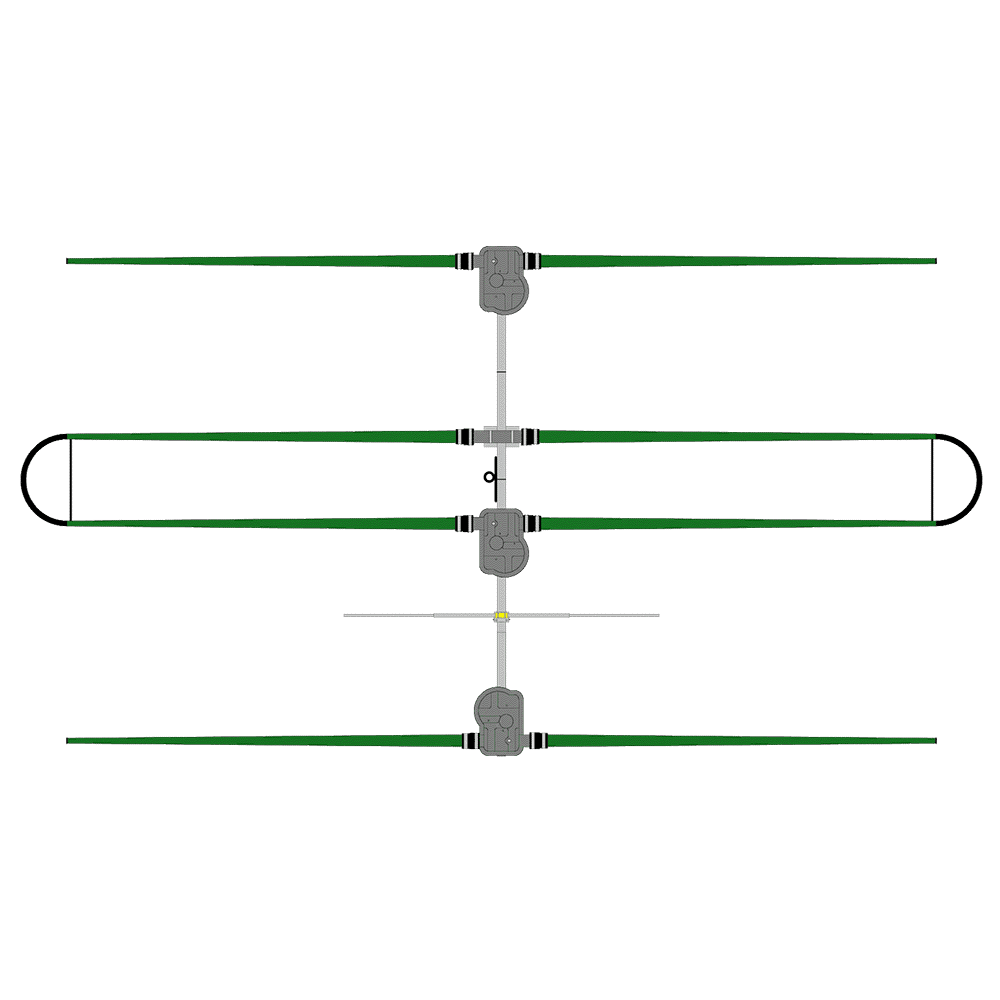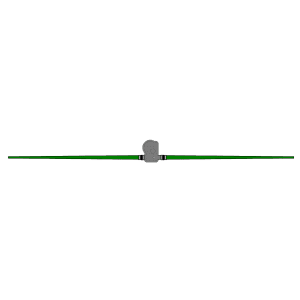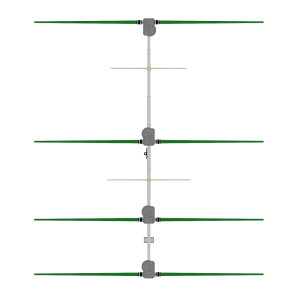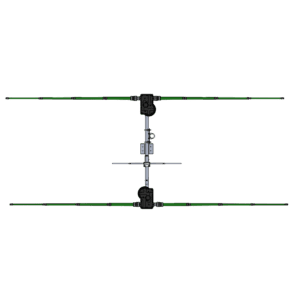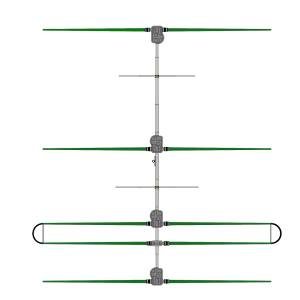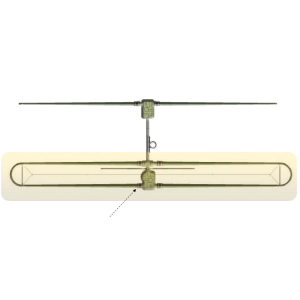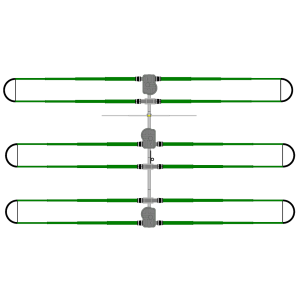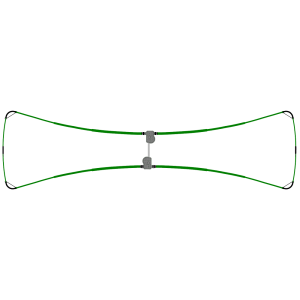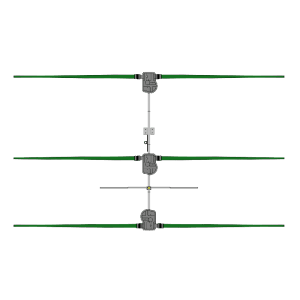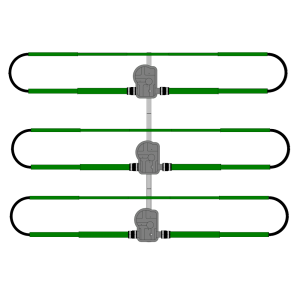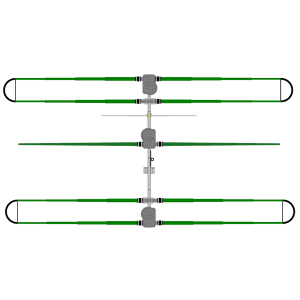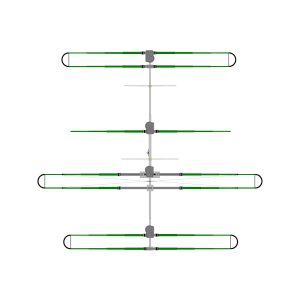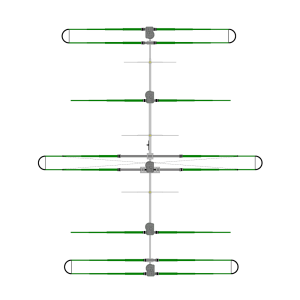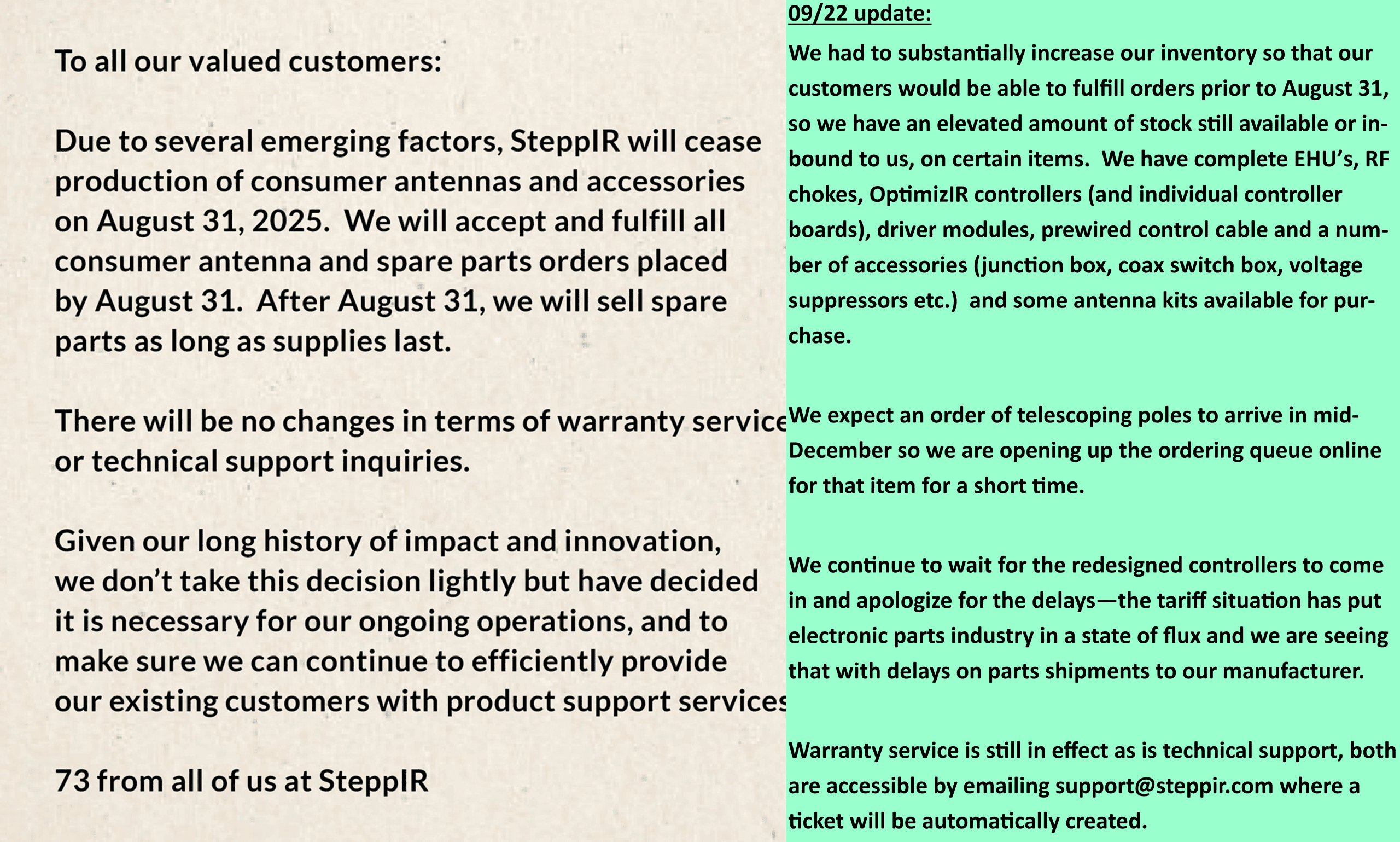Description
The 3 element Yagi is the original SteppIR antenna.
Using our proven technology it gives continuous frequency coverage from 6.95 to 54 Mhz. There have been many improvements over the years like the addition of a 40/30m rotatable dipole and our now standard electronic controller, the SDA 100. The 3 element Yagi with the 40/30m dipole is our most popular antenna. With a 16 foot boom, the antenna models that are programmed into the controller deliver solid gain and exceptional front-to-rear ratios. Ask any SteppIR owner to “hit the 180” button, and you may be surprised to hear just how good the front-to-rear really is for this antenna.
- 3 element Yagi with 40/30m dipole
- 40m-6m continuous coverage
- 16 ft boom
- 39 ft longest element
- 20.3 ft turning radius
- 14.37 sq ft projected area
- Weight: 58 lbs
- Controller options:
-
Weight 58lb/26.3kg *Projected Area 14.37 sq ft / 1.34 sq m Longest Element 39ft/10.97m Turning Radius 20.3ft/6m Boom Length 16ft/4.87m Mast Hardware 2.0in/5.08cm Power Rating 3 kW Wind Rating 100 mph / 160 km/h Frequency Coverage 6.95 MHz—54 MHz Cable Requirements 12 conductor 22 ga shielded Tuning Rate 1.33 ft/sec - 0.4 m/sec -
Band dBi Gain (Freespace) dB F/R (Freespace) 40m 1.8* N/A 30m 2.1* N/A 20m 7.4 25 17m 8.3 25 15m 8.5 20 12 m 8.8 15 10 m 9.0 11 6 m 6.2(10.1)** 4 (30)** * with 40/30 dipole ** with 6m passive element kit
*Projected area is the total perpendicular surface area measured in square feet/square meters, that is exposed to wind. To calculate wind load you always take the largest projected area whether that is from the perspective perpendicular to the boom or perpendicular to the elements. In the case of SteppIR Yagi’s, the maximum projected area will always be the sum of the surface area’s perpendicular to the Yagi elements. This calculation is a constant number and will not change regardless of EIA specification changes. Do not mistake this projected area calculation as anything more than a data point to present to your structural engineer, tower manufacturer or rotator manufacturer so that they can determine what is necessary for your application.
When sizing an antenna to a tower, many factors need to be taken into consideration including, but not limited to: projected area of antenna in square feet or square meters, weight of the antenna and other items on tower, turning radius, element lengths, antenna height, location exposure category, locations three-second gust wind-speed, locations maximum radial ice loading.
Improper specification of an antenna or rotator to a tower can result in product failure, injury or death. SteppIR is not an expert on tower or rotator sizing and for this reason will never make any kind of a recommendation – this specification process is meant for industry professionals such as a structural engineer, tower manufacturer or rotator manufacturer. Please do not attempt to self-specify our products – the information provided by SteppIR is to be utilized by industry professionals only.
